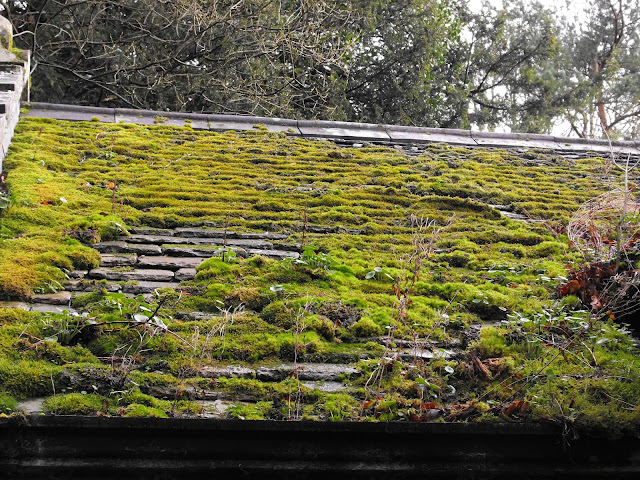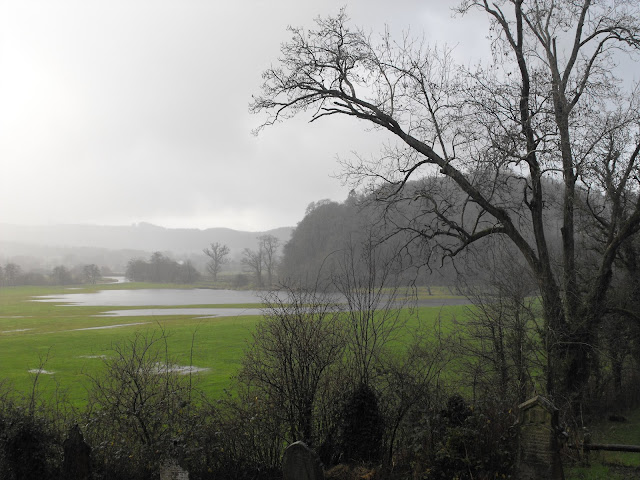A reasonable amount of the castle still remains at Dinefwr. When we first moved here, you could walk up to the ivy-covered walls, but it wasn't really maintained and you couldn't go inside. Now it is made safe and popular with locals and visitors alike.
As you can see, it held its defensive position, on a steep outcrop of rock, with ease, and behind it (see photo below), there were two rock-cut ditches for defence. A promontary fort of the first order and I don't doubt it has been held since the Bronze Age.

This was roofed over and used as a summer house in Victorian times.
Of course, there are fabulous views of the Towy Valley whichever way you look. This is the River Towy with its Oxbow Lakes and meanders.
In the opposite direction is Newton House, where I used to volunteer, and a couple of estate houses. The bracken area is inside the Deer Park.
To the right of the last picture, looking across the parkland towards Llandeilo.
A wider view of the Deer Park.
More River Towy meanders viewed over the ramparts.
Looking straight up the Towy valley, to Dryslwyn Castle, the next link in the chain of command which began at mighty Carreg Cennen Castle, high on its limestone cliff close to Black Mountain. The final link was at Carmarthen Castle, although little remains of that as a Gaol was built on the site in the 18th C. As you can see, a band of rain was enveloping it and heading our way.
Looking to the South. The fields, copses and woodland are typical Carmarthen scenery. Small farmsteads would be about 60 acres or less. That was considered to be a one-man farm. Anything larger and you needed good strong sons to help you.
View across the Castle.
The castle is still surrounded by trees, but when it needed to be defensive in the past, I imagine the hillsides would have been clear so that any attackers approaching could be seen and dealt with.

Here is one of the three vents for light and air, built like a fireplace with steps.
The entrance into the keep with walls about 15 feet thick. We sheltered here from the rain.
We made our way back across the park. Here is Llandyfeisant church, shrugging off the surrounding trees. It is encircled by Yew trees, "children" of much older Yews. The stream which runs beside it would have made this an area venerated in Iron Age times (and before). When the Romans came and built their encampments on high ground at the front of the park, they doubtless visited the spot. It was only natural that in time Christianity should claim it for its own.
This stream cascades through the wall at the back of the church, where there is a rather intense feeling, so we normally scoot around that corner. I would like to say it's just the energy of the water, trapped there against the walls, but I'm not so sure - I got a sudden intense headache as we stopped to take photos.
The roof is well on the way to being a proper centre for mosses and plants.
Finally, the first Snowdrops, beside a Primrose plant which looks as if it will soon be flowering too.




















































